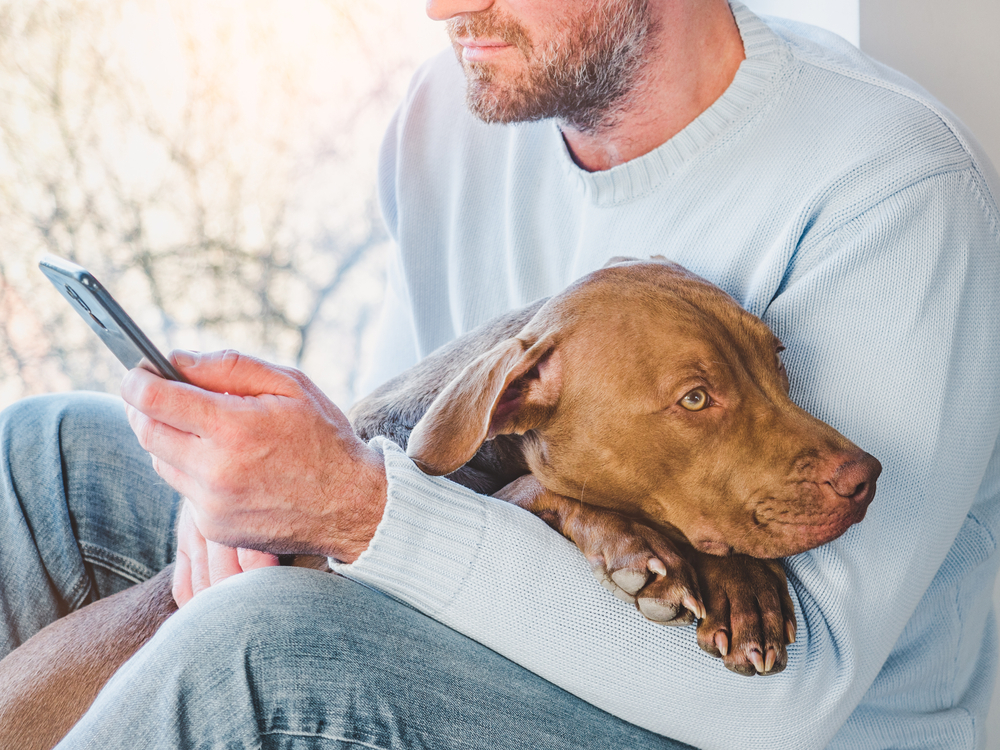Watching your dog have a seizure can be worrisome and frightening, and you can easily fly into a panic. However, by knowing what true seizure activity looks like and what to expect, you can be prepared to help your dog if they experience a seizure.
How can I tell if my dog is having a seizure?
Not every seizure is the grand mal type that is most familiar. Some seizures may look like only a twitch in a limb or the face. Oftentimes, dogs will begin acting strangely before a seizure occurs. This pre-ictal phase, which generally lasts only a few minutes, manifests as anxiety, restlessness, or disorientation. The seizure itself can be classified as one of the following:
- Grand mal seizures — These generalized seizures typically involve the entire body, causing the dog to become stiff, shake violently, or urinate and defecate involuntarily. Many dogs salivate excessively or foam at the mouth, and they may also whine or growl.
- Focal seizures — Focal seizures are limited to a specific body area, and generally look like a twitch or muscle spasm.
- Psychomotor seizures — These seizures are characterized by odd behavior that lasts only a minute or two. A common example of a psychomotor seizure is fly-biting activity, where the dog snaps at the air, trying to catch imaginary flies.
- Cluster seizures — Cluster seizures are a serious situation, distinguished by multiple seizures over a 24-hour period.
If this is your dog’s first seizure, you may be unsure whether it’s truly a seizure, especially if they’re displaying focal or psychomotor seizure signs. Try to record the event to share with your Willow Wood Animal Hospital veterinarian, to help determine if your pet did have a seizure.
What should I do if my dog is having a seizure?
The sight of your dog having a grand mal seizure can be scary, but keeping your pet calm will help them most. Follow these tips to help keep you and your dog safe until their seizure is over:
- Watch for warning signs — Noting warning signs that indicate your dog will soon be having a seizure will help you get them to a safe place before the episode begins. In addition, because you’ll know a seizure is coming, you will remain calm and confident.
- Remove dangerous objects from around your dog — Protect your dog by cushioning their head, removing hazardous items from the surrounding area, and moving other household pets to another room so your dog is alone.
- Check the time — Closely monitor your dog’s seizure and watch the clock for the start and end. If the seizure lasts more than a couple of minutes, prepare to head to Willow Wood Animal Hospital or the nearest emergency veterinary hospital. Any seizure lasting longer than five minutes is considered an emergency, and warrants immediate treatment.
- Try to record the event — If possible, record the episode. This will help your Willow Wood Animal Hospital veterinarian determine if the event was a true seizure, or your pet has another medical issue.
- Do not restrain your dog once the seizure starts — Once a seizure starts, do not try to hold your dog still. Oftentimes, a dog will be unaware of their surroundings, and may easily bite in fear or confusion. That your dog will swallow their tongue during a seizure is a myth, so never put your hand inside their mouth, as you will likely be bitten. Instead, speak softly to your dog, to reassure them as they come out of their seizure. Once they are aware of their surroundings and recognize you, you may hold them.
- Give anticonvulsant medication if prescribed — If your dog has already been diagnosed with epilepsy, they may benefit from emergency anticonvulsant medications administered at home. Medication may be administered rectally or nasally in certain situations, so ask our veterinarian if an emergency medication may benefit your dog.
- Log the seizure — If your dog has recurring seizures, keep a log of each episode. Describe how the event looks, note starting and ending times, and include pertinent information about the pre- and post-ictal phases. Also, add the time you give your dog their anticonvulsant medication. All this information can be useful for the veterinarian when determining an appropriate treatment plan.
- Call your veterinarian — After your dog’s seizure has ended, call our team. We’ll also log the event in your pet’s medical record, and re-evaluate the treatment plan, if necessary.

Emergency seizure situations
If your dog has a seizure lasting longer than five minutes, they need immediate veterinary treatment. Additionally, if your dog has more than three seizures in a 24-hour period, they require emergency veterinary care.
Don’t go through your dog’s seizures alone. Contact your Willow Wood Animal Hospital team for help managing your dog’s seizures, or for emergency after-care treatment.







Leave A Comment